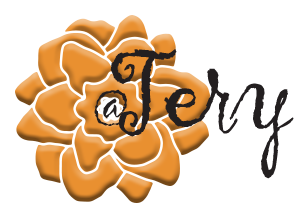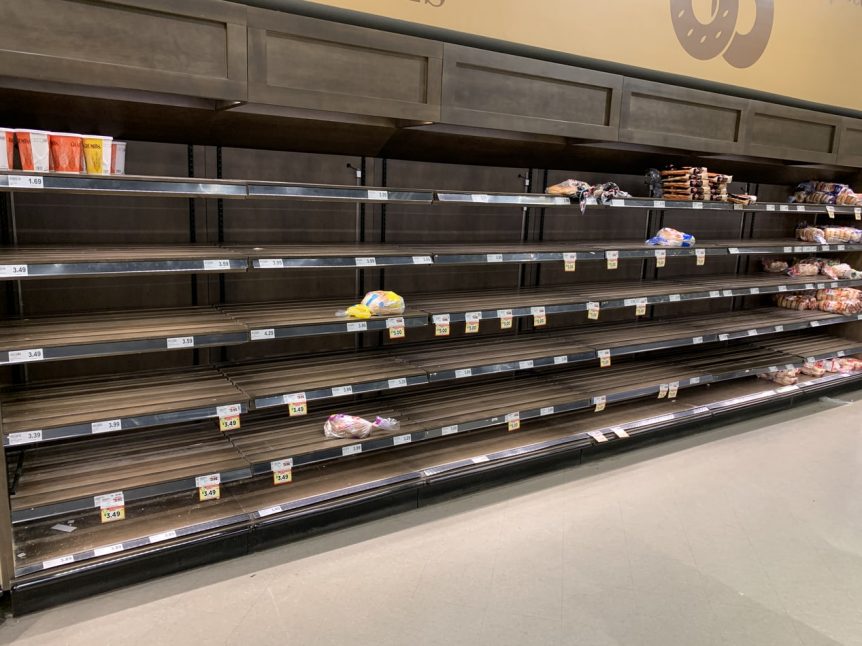Grocery shopping during COVID-19 is frightening and challenging for customers, retail staff and managers. The overwhelming feeling of uncertainty and fear of getting this highly contagious virus is causing panic buying. The need to hunker down at home is causing the cascade effect of buying toilet paper and hand sanitizer that will last for a century. Most people want to do things to ensure health safety. Communication guidelines on health safety will lead to better outcomes overall.

Joyce Spataro grocery shopping
People that are most affected by COVID-19 are elderly, seniors 60 years old and greater, those suffering from autoimmune diseases, lung diseases, or have compromised immune systems. They will need the most help with their grocery shopping and some folks are unable to go to the store. Some people in this cohort are avoiding going to the grocery store altogether. My mother is in this group of people. She is in her eighties and has an autoimmune disease. I am the designated shopper and I have to use extra care and caution in this new zeitgeist.
Grocery shoppers are grappling with what to do. It’s hard to get a full understanding of all the human and other variables involved with the COVID-19 to fully grasp how to limit exposure. Confusion sets in, customers question: Is it safer to have the groceries delivered, pick up online orders, or go into the store?
Changing the way customers grocery shops during COVID-19 will be tricky. We live in a very connected eco-system even if groceries are ordered online and delivered there is a risk of spreading the coronavirus. What are grocery stores doing for the communities they serve? Grocery stores are taking precautions to protect their staff and their community. These precautions include:
- Closing stores momentarily to sanitize stores and restock shelves.
- Giving managers the discretion to limit sales of large quantities of high demand items to curb panic buying.
- The retail staff is on the frontlines. Protecting the retail staff by providing them with gloves, and in some cases masks, and having hand sanitizer within reach.
- Continous sanitizing of shopping carts, POS touchscreens, and anywhere a customer may have to open or close a door.
- Grocery delivery staff will need to wear the same protective garments.
Retailers can take a leadership position and provide clear guidelines during this crisis, and help and inform customers about mindful buying and reconsider decisions of what they need. Getting that message across channels will be key. Tactics include email and social media marketing, text messages and messaging through grocery app will help communicate guidelines and changes.
Retail grocery stores might have to ramp up the infrastructure so there is a smooth process between ordering and delivery. Create a curbside pickup process to limit the number of customers having to go in-store, balancing the exposure of the delivery staff, and keep their community and staff safe. All of these protective measures will help flatten the pandemic curve.
Here is a list of grocery chains and what is being done to put protective measures in place:
- Publix using a press release.
- Kroger used Twitter to get the word out.
- Walmart issued a press release.
- Whole Foods Market responded through its newsroom.
- Wegmans spelled out closures and provided an extensive list of items that have purchasing limits.
Sources:
Redman, Russell. (March 13, 2020). Coronavirus: How leading grocery chains are responding to keep customers safe and shelves stocked. Supermarket News.
Jingnan, Huo. (March 14, 2020). Stores Start To Cut Hours As Coronavirus Prompts Surge In Panic-Buying. NPR.
Mull, Amanda. (March 14,2020). How You Should Get Food During the Pandemic. The Atlantic.

